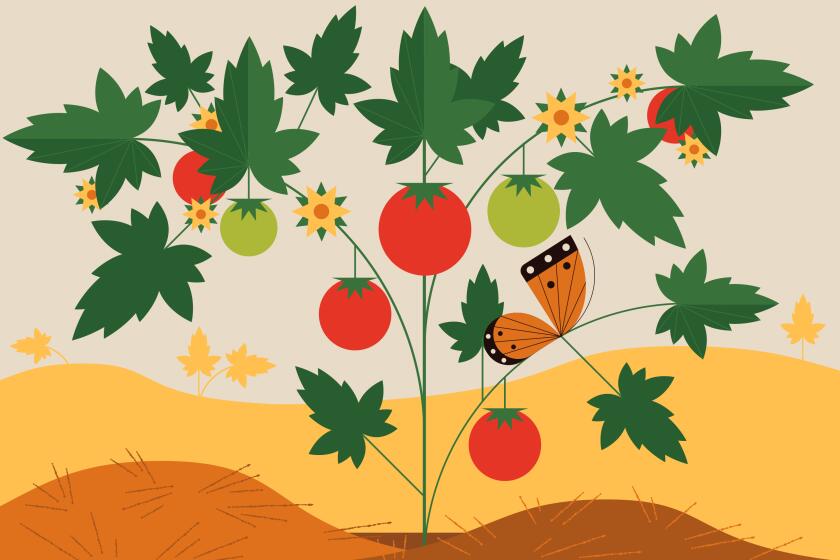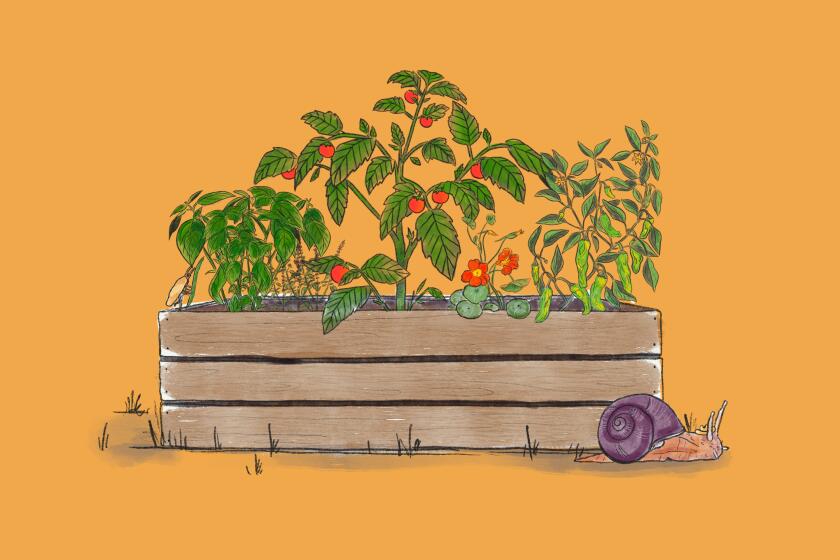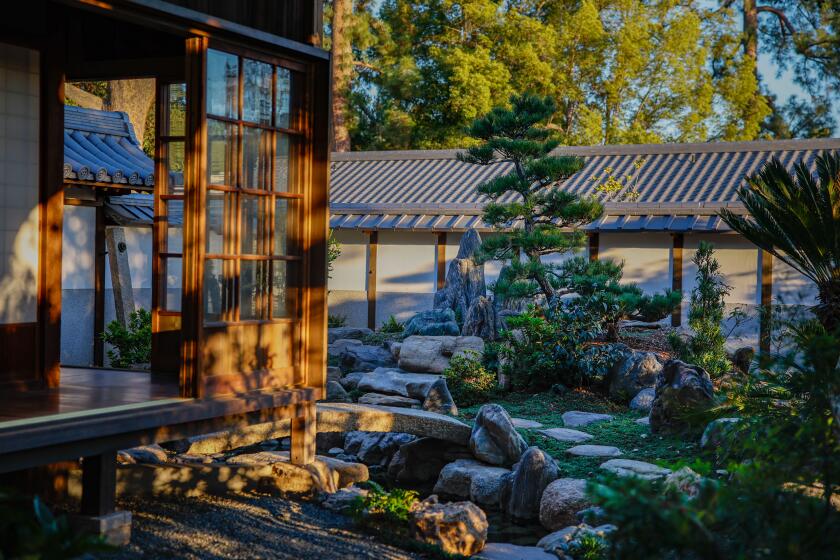Before fantasizing over a spring garden, prep your raised beds. Here’s how to do it right
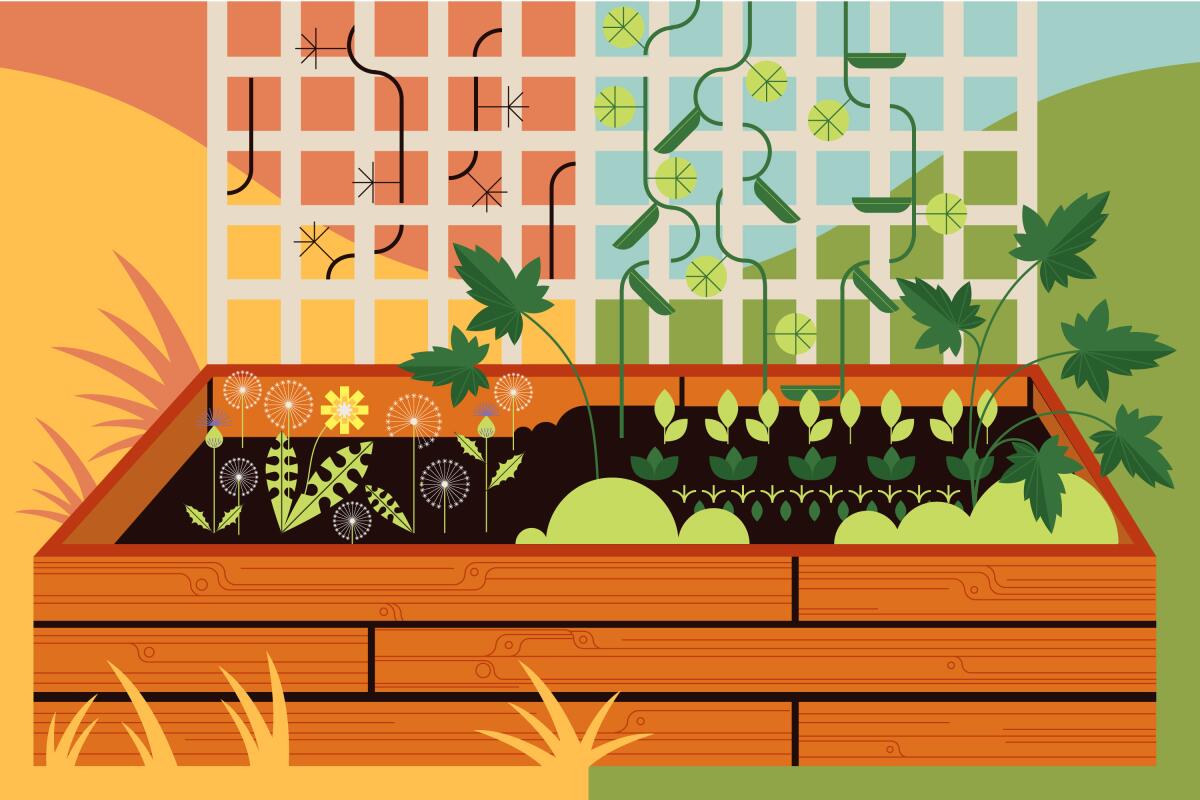
- Share via
It’s nearly spring, so what better time to announce that the L.A. Times Plants newsletter is back!
I AM SO THRILLED!
After the devastating layoffs at the paper in late January, a voluntary buyout period went into effect. Enough people accepted special severance packages that several of us were able to return to the L.A. Times.
Which is why the newsletter I sadly ended last month has been resurrected. And that shrieking you may have heard on Feb. 14 was my delight in learning I had been reinstated.
BEST VALENTINE’S GIFT EVER!
So I’m back to offer up another list of the many plant-related events and activities coming up in March, not the least of which is SoCal’s annual harbinger of spring — Tomatomania’s pop-up sales of more than 100 tomato varieties, plus other seedling sales, such as the start of Cal Poly Pomona nursery’s annual Tomatozania sale.
But before you rush out to start planting, please note the following: Most warm-season seedlings like tomatoes and peppers prefer warmer soil and temperatures than what we’re experiencing now — say lots of sunny days over 75 to 80 degrees. You can plant those babies now, but they’re likely going to sit and “pout” in the garden rather than flourish. And once it does get warm enough they’ll probably never be as robust as they would have been if you’d waited a few weeks until things warmed up, said Master Gardener Yvonne Savio.
You’re reading the L.A. Times Plants newsletter
Jeanette Marantos gives you a roundup of upcoming plant-related activities and events in Southern California, along with our latest plant stories.
You may occasionally receive promotional content from the Los Angeles Times.
So by all means, start planning your spring garden and buy those seedlings, but wait until it’s warmer to plant them. (Pro tip: Make a list so you don’t over-buy.)

Besides, you’ve got work to do first to get your raised beds and containers ready for the new season.
This advice applies to in-ground gardens too, but since so many of us grow food in small spaces these days, I want to focus on the reality of container growing and raised beds — all that nutritious fluffy soil you started with, filled almost to the brim of your containers and beds, got compacted and depleted over months of watering and growing.
You don’t have to replace all that remaining soil, but you will need to replenish what’s been lost, and the time to do that is now, before you start planting.
I asked three veggie garden experts for their advice — Savio, creator of the GardeningInLA.net blog (check her blog’s events calendar for the many gardening classes she’s teaching in March), Sophie Pennes of Urban Farms L.A., and Jo Anne Trigo, whose popular Two Dog Nursery closed in 2021 when she and her husband, Alex, retired. But Jo Anne can’t stop planting, so she still has brief sales events, like their upcoming Two Dog Tomato Party offering 44 varieties of tomato seedlings on March 23-24.
Heavy winter rains have wakened the fungal spores in our soil. Tomatomania owner Scott Daigre explains how to keep tomatoes fungus free, plus Southern California plant events.
Their bottom line: Early March is a better time to prep than plant. “The soil is just too cold,” Trigo said. “Your plants will just sulk because they’re cold and not happy, and you just might end up having to replace them.”
Here are their prep tips for creating a successful garden in your containers and raised beds.

1. Tackle those weeds
I love the rain, but wow, I have never seen a more luxurious crop of weeds in and around my raised beds. Get rid of those leafy demons before they flower and scatter their seeds to set next year’s crop of dandelions, cheeseweed and, in my case, run-amok arugula that went to seed last fall while I was away and covered my entire side yard with a short forest of greens.
If you start early enough, before your weeds have flowered, you can simply use a spade to dig shallowly and turn them over, so the roots are exposed on top and the green stuff is underground, where it will decompose and feed the soil.
If the weeds do have flowers or seeds, however, pull them by hand, shake off the excess soil and put them in your green bin, not your compost pile, Savio said, to keep weed seeds out of your compost.
“Don’t view weeding as a chore,” Pennes said. “Just put on a podcast or treat it like a meditation. There’s something good for your brain doing a repetitive motion with your hands. ... I actually enjoy it.”
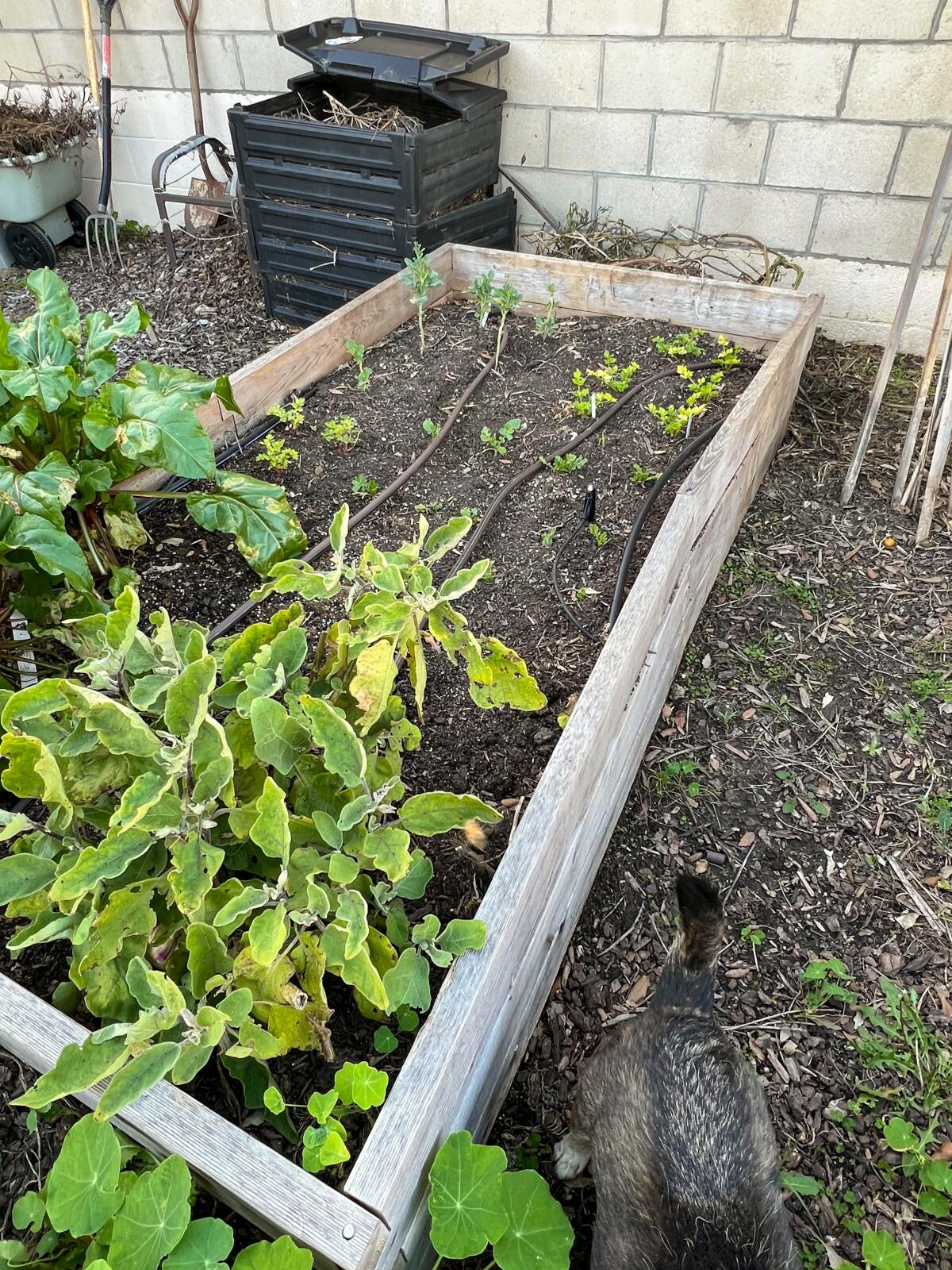
2. Check for issues
Basically, this is when you pull back your drip irrigation tubing and look for unwanted things in your raised beds.
Pull your irrigation tubing back gently, Pennes said, enough so it won’t get buried when you add new soil and amendments. Don’t try to add the soil on top of the tubing, since it makes it difficult to tell whether your system is working properly.
You’ll also have to temporarily remove any plants still growing in the beds until you add the new soil, And if your beds are near trees or shrubs like bougainvillea, definitely check for and cut out any roots that might be gravitating to the yummy nutrients in your boxes. Take care: Use your hands to reach through the soil to limit the impact on the tiny creatures that help create a good growing medium, like earthworms and mycorrhizal fungi.
After you raise the soil level, put the irrigation tubes back in place and then turn the system on to make sure it’s working properly.
“Some people won’t want to do that because they’re afraid of what they’ll find,” Pennes said (uncannily reading my mind), but it’s far easier to replace leaks or clogs in your irrigation system before you have a bed full of plants and wonder why they’re wilting.
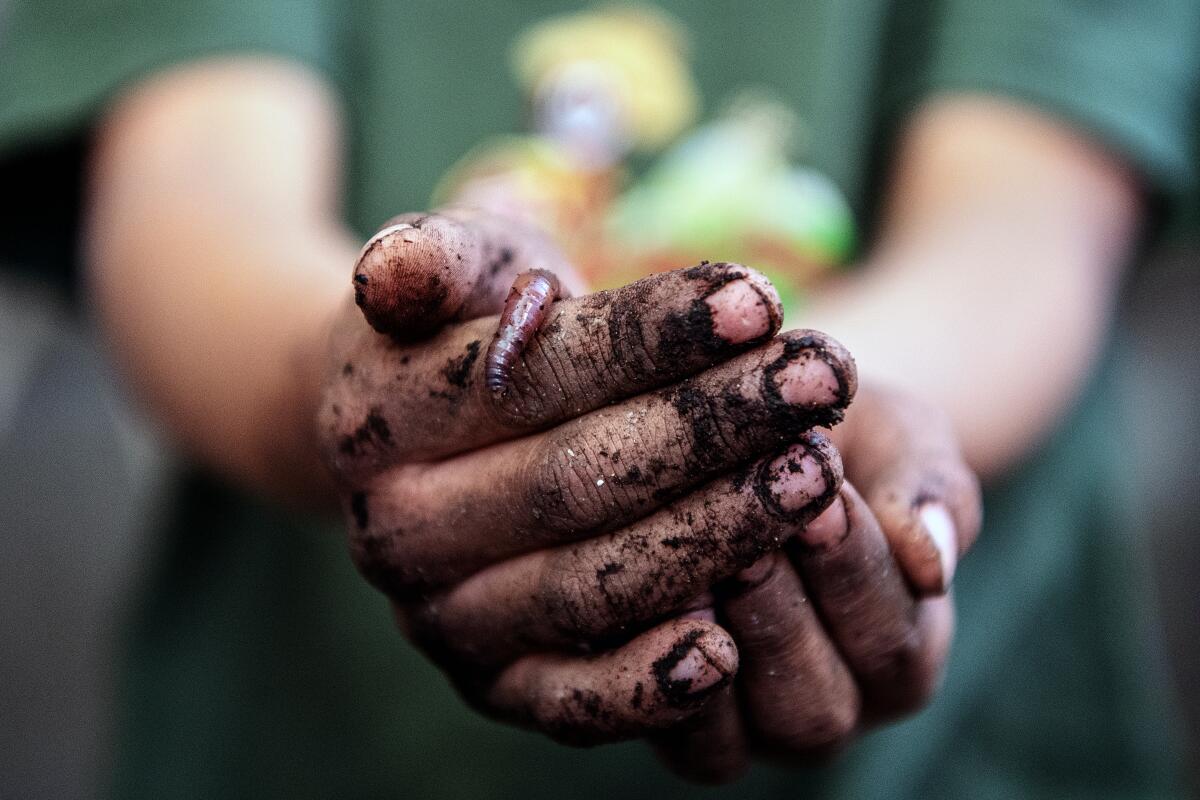
3. Replenish and feed
If your raised beds are like mine, they’re only half-full right now, which means your little plants won’t be getting as much sun and nutrients as they could, especially in the dark corners of the box, where slugs and spiders love to hang out, Pennes said.
The ratio of replenishment soil to amendments is about 70-30 or 60-40, with an organic raised-bed or potting soil being the primary ingredient, the experts said. Your amendments will be the smaller amount — predominantly organic compost, with about 10% to 20% worm castings, Trigo and Pennes said.
“Worm castings aren’t just a tremendous fertilizer,” Trigo said, “they seem to boost the plant’s ability to fight off aphids and other issues.”
Savio likes adding aged or composted steer or chicken manure too. You can use less chicken manure because it’s more powerful, but use it carefully, she warned, because too much in the soil creates so much microbial activity that it literally raises the temperature enough to “burn” the tender seedlings. If you add manure, Savio suggests waiting at least a week or two before planting. If you’re not sure, stick your hand in the soil, and if it feels uncomfortably warm, wait a little longer for things to cool down.
You can easily figure out how many cubic feet or yards of soil you’ll need by measuring the length, width and depth of the area you need to fill and using an online soil calculator, like this one offered by Gardener’s Supply Company.
Add your organic soil to the bed first, and then your layers of amendments, and gently mix them in with a garden fork or hand fork. In raised beds, Pennes suggests using your hands and forearms to firmly pat down the new soil and amendments and add more as needed to fill it to the top. This removes air pockets and slows the inevitable compaction.
The best plants for raised garden beds include tomato, eggplant, pepper and kale. Here’s how to keep raised bed gardens producing even in summer.
In containers without plants, add your mix of organic potting soil and amendments to about an inch below the top, so things don’t overflow when you water, and mix it in with the old soil. (Unless the previous plant had a disease or fungus, in which case it’s best to discard all the soil, clean the pot with a mix of white vinegar and hydrogen peroxide and refill with fresh soil and amendments, Pennes said.)
If you want to increase the soil level in a container that has plants, do not add soil from the top; that can suffocate the plant. Instead, gently pull the entire plant and roots out of the pot and add your soil/amendment mix to the bottom, where it will do the roots the most good. Then put the plant back into the container and water well.
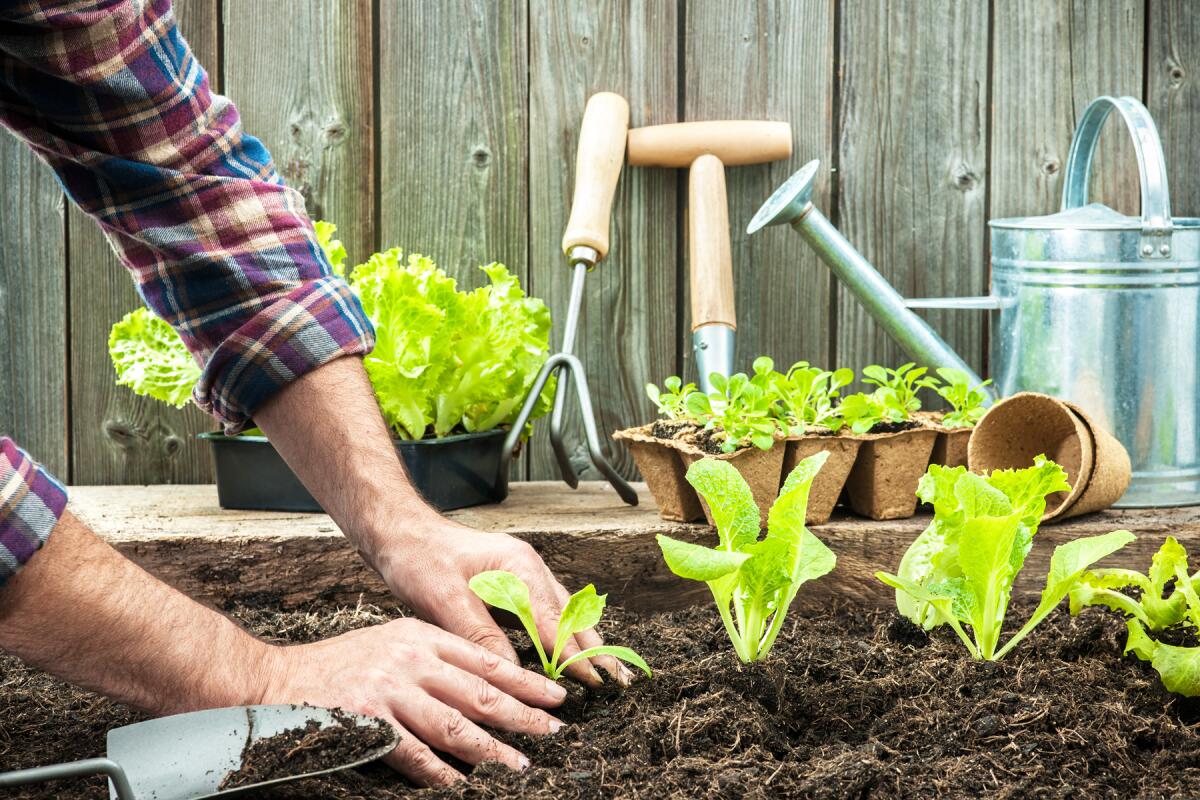
Now you can go buy your seedlings with a clear conscience, secure in the knowledge you’re giving them a good home.
In other plant news....
Hard to believe but wildflower season is fast upon us! How can I be sure? Theodore Payne Foundation’s Wild Flower Hotline opens March 8, narrated by Emmy Award-winning actor Joe Spano, at (818) 768-1802, ext. 7. Check the hotline weekly through June for reports about the best publicly accessible places to spy spring wildflowers in Southern and central California.
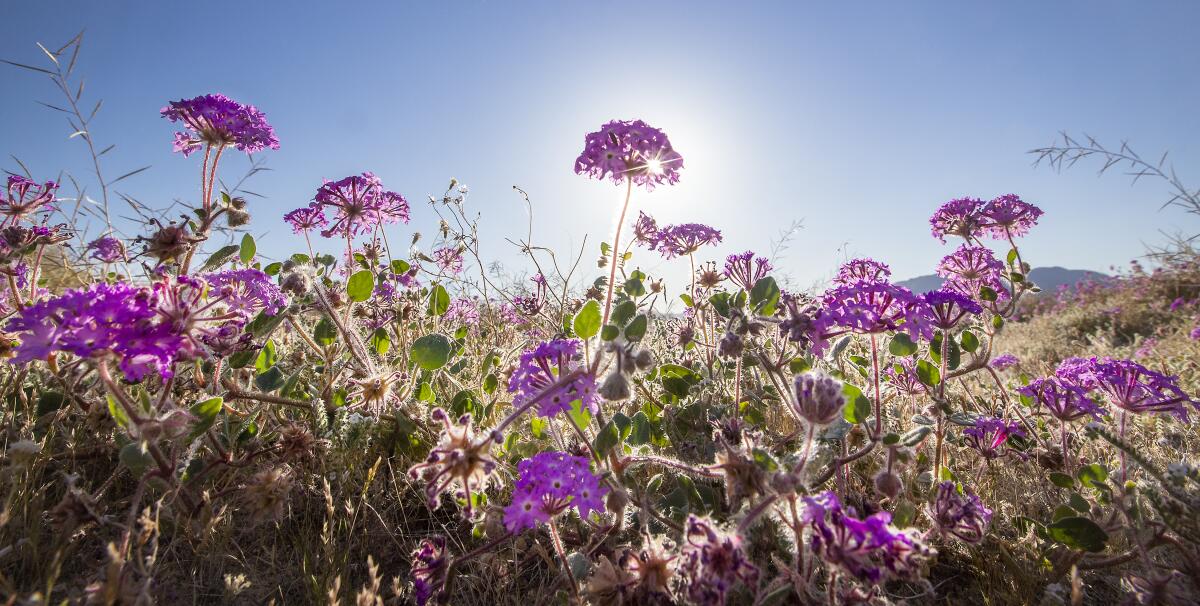
And for desert flower fans, we found a very cool public group on Facebook, Desert Wildflowers & Wildlife, that encourages people to report wildflower sightings in desert regions and share their photos.
Finally, the Los Angeles County Natural History Museum is asking people to document their slug and snail sightings for its Snail Blitz 2024. This may be tough for some gardeners, but they’re asking people to photograph, not squish, the little slimers through March 31. Afterward you can gently move them away from your plants. (And if you’re lacking snail empathy, check out the Snail Hospital photos on Instagram for a huge dose of adorable snail “patients” pretending to go to school, study and even hunt for Easter eggs.)
You’re reading the L.A. Times Plants newsletter
Jeanette Marantos gives you a roundup of upcoming plant-related activities and events in Southern California, along with our latest plant stories.
You may occasionally receive promotional content from the Los Angeles Times.
Upcoming events
Through March 20
South Coast Steward volunteer registration. Successful applicants will learn sustainable farming practices by working in the no-till vegetable fields, greenhouse or fruit orchards of the South Coast Research and Extension Center in Irvine primarily on Mondays and Fridays from 8:30 to 10:30 a.m. Volunteers must be at least 18 and live in Orange County. Applications close on March 20. surveys.ucanr.edu

Through March and April
Tomatomania starts its annual pop-up sales of hundreds of varieties of tomatoes and peppers at locations around Southern California, March 1-10 at Roger’s Gardens in Corona del Mar; March 8-10 at Fig Earth Supply in Mt. Washington; March 9-10 at Mission Hills Nursery in San Diego; March 14-16 at Otto & Sons Nursery in Fillmore; March 22-24 at Tapia Brothers in Encino; and opening March 28 at Wachter Hay & Grain in Ojai. Savio will answer questions about growing tomatoes and other vegetables at Tapia Brothers from 10 a.m. to 3 p.m. on March 23, and several locations will continue to sell seedlings after the opening days. For more details visit tomatomania.com
March 2
Plant Day at Los Angeles Central Library 10 a.m. to 3 p.m. in downtown L.A. Keynote speakers include L.A. Times Plants reporter Jeanette Marantos discussing habitat gardens, L.A. Dodgers Landscape Manager Chaz Perea and his team talking about how they made the grounds of Dodger Stadium into an accredited botanical garden and urban farmer Elliott Kuhn of Cottonwood Urban Farm discussing L.A.’s urban ecology and how we can create a sustainable and healthy future. The event includes workshops in a variety of plant-related topics, including fruit tree pruning, growing herbs, making bouquets, composting, potting and learning about the TreePeople organization. Admission is free. lapl.org/plant-day
March 2-3
Joyful Flowers: Ikebana Show, 10:30 a.m. to 4 p.m. both days at Sherman Library & Gardens, Corona del Mar. The event includes a history of this Japanese form of flower art and demonstrations about how to create ikebana arrangements at 11:30 a.m. both days. The event is free with $5 admission to the garden (members and children under 4 enter free). experience.thesherman.org
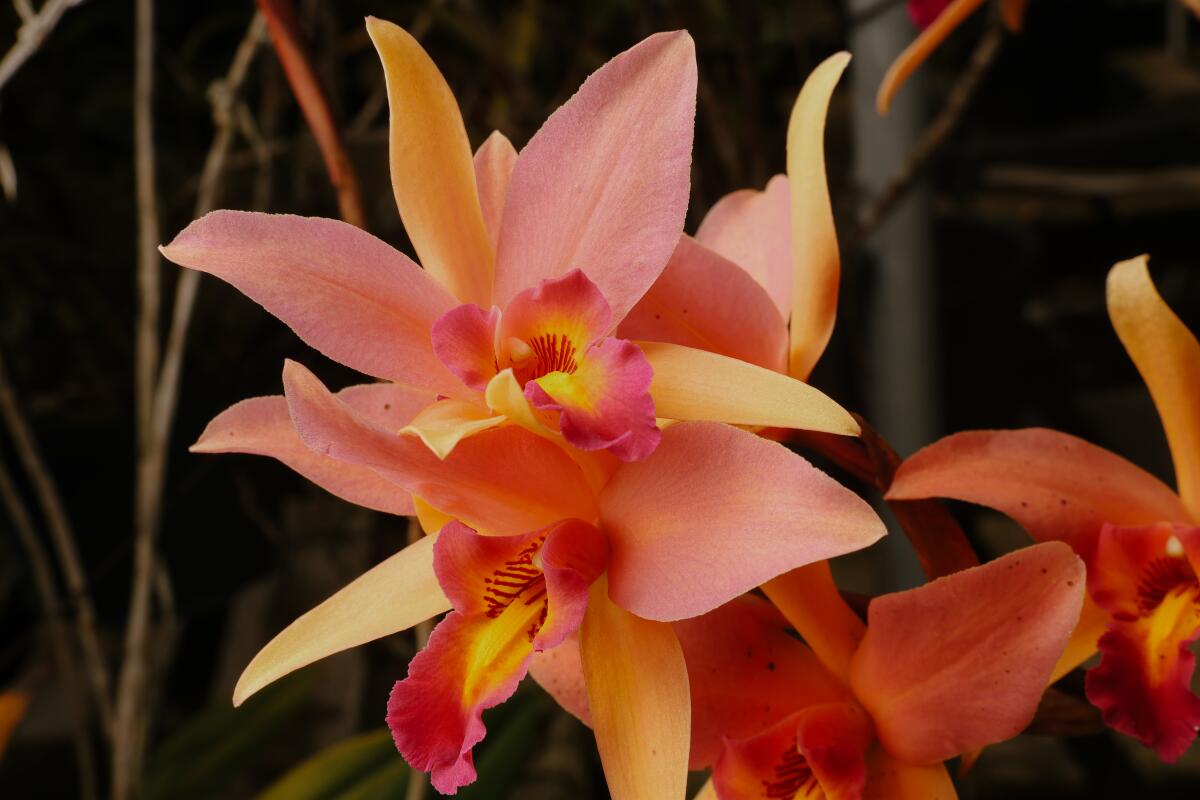
March 8-10
Santa Barbara International Orchid Show, 9 a.m. to 5 p.m. at the Earl Warren Showgrounds in Santa Barbara. The event includes vendors selling orchids, containers and other equipment as well as potting and floral arranging demonstrations. Tickets are $20 or $30 for a three-day pass. Children 12 and under enter free with a ticketed adult. sborchidshow.com
Paul Gripp, 90, helped build the famed Santa Barbara Orchid Estate and will be there sharing tips during the International Orchid Show March 10-12.
March 8
Irrigation Troubleshooting: A Maintenance Walk and Talk with native plant enthusiast Erik Blank, a member of the Theodore Payne Foundation nursery staff, from 9 to 10:30 a.m. at the foundation’s demonstration gardens in Sun Valley. Register online, tickets are $15 ($12 members). eventbrite.com
March 14
Exercise in the Hyper-Local — How the Wallis Annenberg Wildlife Crossing Is Connecting Critical Habitat & Supporting Biodiversity, a talk by project lead and landscape architect Robert Rock at the meeting of the Southern California Horticulture Society at 7 p.m. at the Friendship Auditorium in Griffith Park. Admission $5, free to members. socalhort.org
March 15
California Native Plant Container Gardening with Flora Ito, manager of the Theodore Payne Foundation nursery, from 9 to 10:30 a.m. at the foundation’s demonstration gardens in Sun Valley. Learn what native plants grow best in containers and provide habitat for pollinators and other creatures. Register online; tickets are $25 ($20 members). eventbrite.com
March 16
Cal Poly Pomona Nursery’s Tomatozania starts at 10 a.m. at the campus Farm Store in Pomona and continues daily until all the plants are gone. The annual sale includes dozens of different tomato varieties propagated by plant sciences students. eventbrite.com
Southern California Hemerocallis & Amaryllis Society Daylily & Bulb Show, 10 a.m. to 4 p.m. at the Los Angeles County Arboretum in Arcadia. The event includes demonstrations and bulb sales. Free with tickets to the garden, which must be purchased online in advance: $15 adults, $11 seniors 62+ and students with ID and $5 children ages 5-12. Children 4 and under and members enter free. arboretum.org
Visitors to the Huntington Library can tour a restored 18th century Shoya House, a residence from rural Japan.
Ikebana International’s Los Angeles Chapter 4 Annual Spring Exhibit, 11 a.m. to 4:30 p.m. at the Los Angeles County Arboretum in Arcadia, presents an exhibit of Japanese floral arrangements in five Ikebana styles: Ikenobo, Ohara, Saga Goryu, Sangetsu and Sogetsu. Free with tickets to the garden, which must be purchased online in advance: $15 adults, $11 seniors 62+ and students with ID and $5 children ages 5-12. Children 4 and under and members enter free. arboretum.org
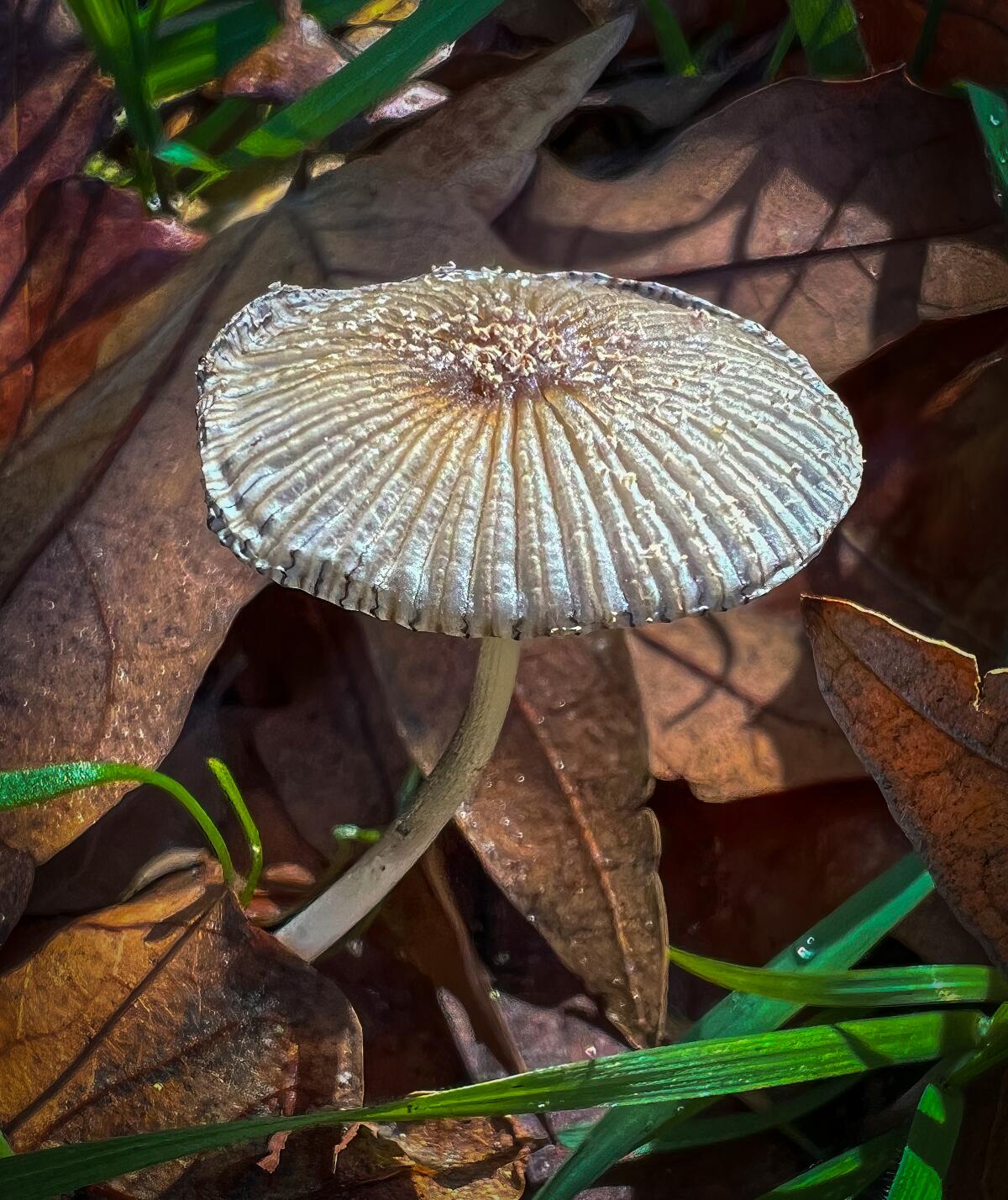
Finding Our Way Home With Fungi, a mushroom walk-and-talk with mycologist Aaron Tupac, chair of the North American Mycological Assn.’s Conservation and Stewardship Committee, 11 a.m. to 1 p.m. in the Arroyo Seco in Altadena. Register for this Theodore Payne Foundation class online; tickets are $35 ($25 members). eventbrite.com
March 22
Intro to California Native Plant Garden Design, a workshop taught by Theodore Payne Foundation Director of Horticulture Tim Becker from 9 a.m. to noon at the foundation’s demonstration gardens. Register online; tickets are $55 ($50 members). eventbrite.com
Here are the best retail native plant nurseries in Southern California to help you create a habitat for birds and pollinators in your yard or even on a patio.
March 23-24
Two Dog Nursery Tomato Party, 10 a.m to 4 p.m. both days in Mid-Wilshire. The nursery closed at the end of 2021 when owners Jo Anne and Alex Trigo retired, but Jo Anne says she can’t stop planting seeds, so she’s offering a two-day sale of 44 varieties of tomatoes. The varieties are listed on the website; no preorders, and bring your own boxes to carry seedlings away. twodognursery.com
March 26
Propagating California Native Plants From Seed with Theodore Payne Foundation botanical technician Ella Andersson, 9 a.m. to noon at the foundation’s nursery in Sun Valley. This hands-on workshop covers basic seed physiology, viability, germination cues and pretreatments, sowing and care. All materials provided; each student takes home seeds they have sown. Register online; tickets are $85 ($75 for members). eventbrite.com
March 30
Black Thumb Farm and L.A. Compost present Seed Swap, a chance to swap unneeded seeds for others you need or want, 10 a.m. to noon at the farm in Panorama City. Bring your labeled seeds, wrapped five to 10 per package, in recycled envelopes, jars or baggies. Admission is free but preregistration is required via Google Form.
Consider subscribing to the Los Angeles Times
Your support helps us deliver the news that matters most. Become a subscriber.
What we’re reading
I am totally addicted to the house remodel sagas recounted by my colleague Lisa Boone, but her newest one about an expansion built around the property’s venerable olive tree — ‘’The tree is the soul of the house” — is particularly wonderful because (spoiler alert) they saved the tree!
Remember last month’s deep dive into L.A.’s greatest trees? Well, a dozen readers weighed in with their favorites, adding to our list. Any here you know?

One of my happiest memories in England was discovering a large wooden swing hanging from a tree along a path through the lovely village of Cottingham. We all took turns swinging as high as we could go, staring into the branches of what felt like a forest drenched in history, so imagine my delight to learn we have 15 trails with secret tree swings in SoCal!
If you need something else to worry about, or you just dislike untroubled sleep, don’t miss Hayley Smith’s riveting report about the Atlantic Meridional Overturning Circulation, or AMOC, which “is a system of ocean currents that circulate water in the Atlantic Ocean like a conveyor belt, helping to redistribute heat and regulate global and regional climates,” Smith explains. Researchers are concerned our warming climate could collapse this system, wreaking havoc on our already messed-up climate patterns. The good news? The chances of it happening this century are less than 10%. But if it does happen, Europe could revisit the Ice Age, and between wildfire smoke and atmospheric rivers, Californians likely will be losing their tans.
The rains have wrought a few lovely surprises, however, as my colleague Lila Seidman noted in her story about Death Valley’s ghostly Lake Manly, which appeared after rains this fall and winter. It’s only 6 miles long and just knee deep, but that’s enough to explore the usually dry-as-dust area in a kayak, at least for another few weeks.

And finally, check your travel envy-o-meter, since my colleague Chris Reynolds has returned from Washington state with a collection of enticing travel stories. My favorite so far recounts his overnight stay in a treehouse hotel near Seattle. He opted for the “budget” room in this leafy B&B, where for $325 you get a comfortable room in high branches, a lovely breakfast and the indelible experience of walking up and down 20 stairs in the rain to use a toilet in the middle of the night. Next time, he says, he’ll pay a little more and get his own in-room toilet.
Sign up for The Wild
We’ll help you find the best places to hike, bike and run, as well as the perfect silent spots for meditation and yoga.
You may occasionally receive promotional content from the Los Angeles Times.
